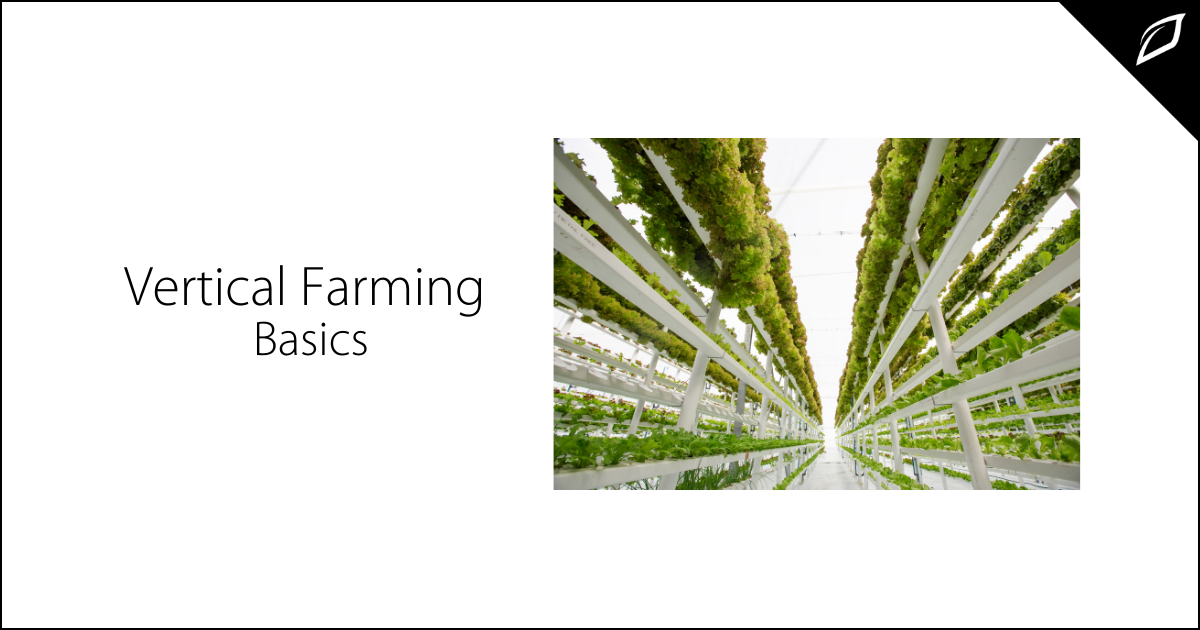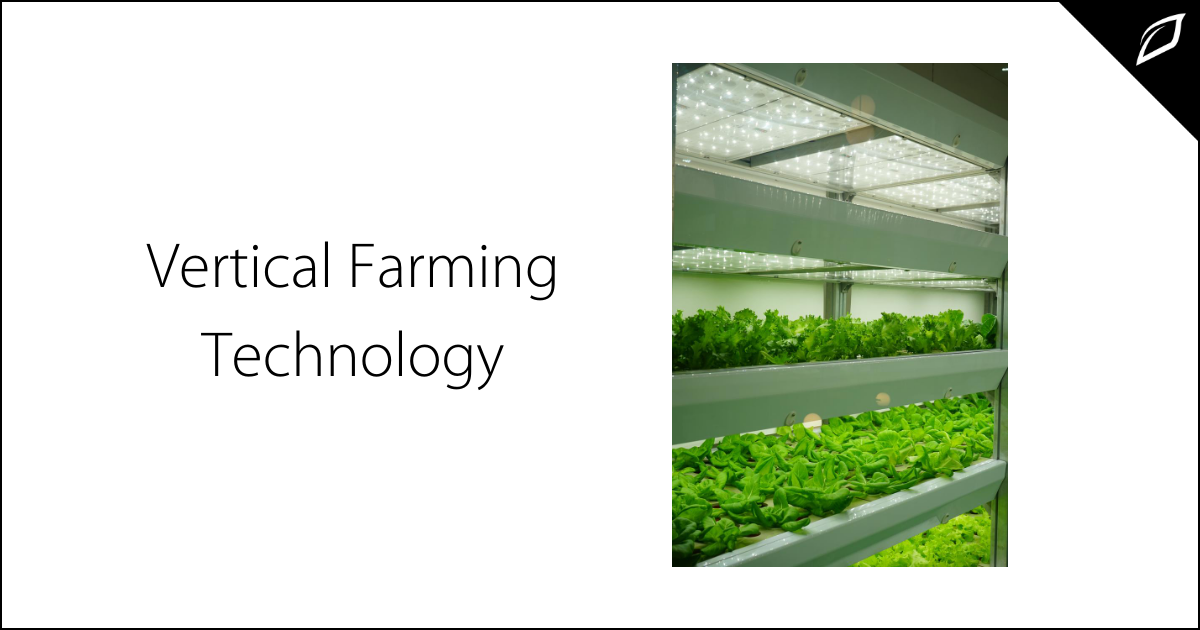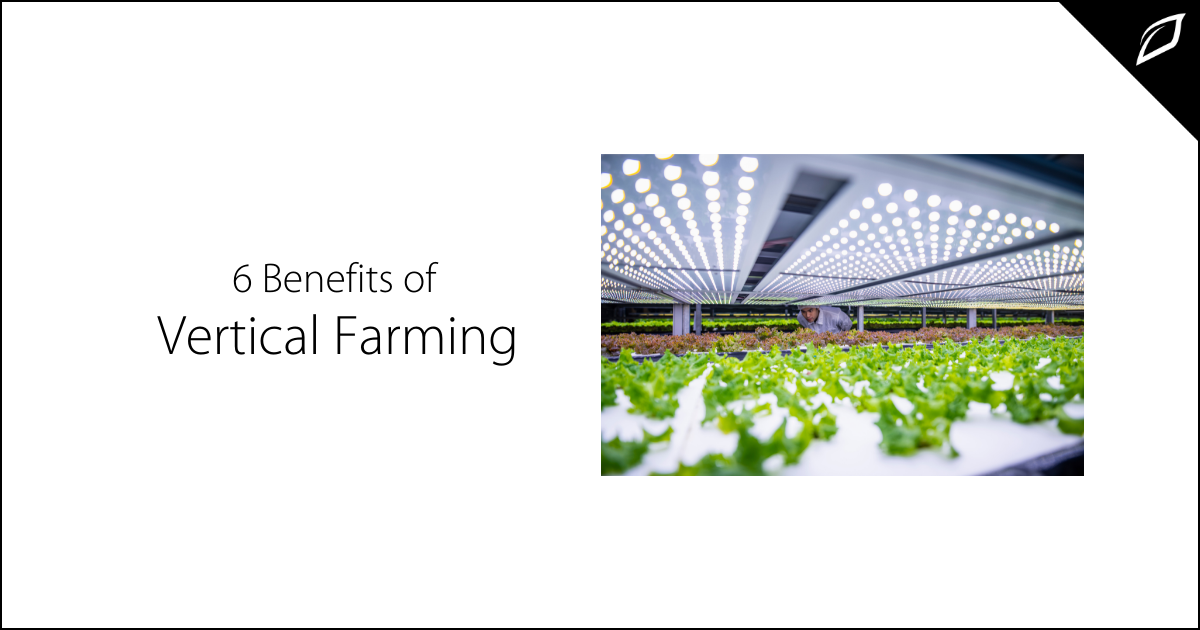Vertical Farming Technology
Technology innovations improve and enhance our lives. It's no surprise that it's changing how and where we grow crops and other commercially grown...
2 min read
Joy King : Apr 24, 2021 4:00:00 AM

As technology changes, improves and enhances every aspect of our lives, it's no surprise that it's also changing how and where we grow crops and other commercially grown plants. With climate change altering weather patterns, taking crops indoors is becoming a viable and profitable option. Let's take a look at how vertical farming is changing how we grow.
What is vertical farming?
According to Wikipedia, vertical farming is the practice of growing crops in vertically stacked layers. It often incorporates controlled-environment agriculture, aiming to optimize plant growth, and soilless farming techniques such as hydroponics, aquaponics, and aeroponics.
Benefits of vertical farming
By providing fresh local produce, vertical farming increases food production and expands agricultural enterprises. As the world's population continues to expand, it's estimated that by 2050 two out of every three people are expected to live in metropolitan areas.
Growing fresh vegetables near urban areas help meet growing food demands in environmentally sustainable ways. Reducing the time it takes to transport produce to cities lowers greenhouse gases and provides more nutrient-rich vegetables, all while saving valuable resources like water and fertilizers.
Vertical farming technology
Agricultural technology allows vertical farmers to monitor every environmental condition imaginable. But monitoring is just the first step. To get the most out of vertical farming technology, you need to connect equipment to an operating system that automates processes and provides insights into the data. Actionable insights provide more straightforward ways to predict yields accurately. Let's examine the areas of technology available to vertical farmers.
Monitor: Collecting data begins by monitoring the most significant aspects of your controlled environment grow using sensors placed throughout the grow operation. Temperature, soil moisture levels, humidity, EC, light, and C02 levels are the essential points to monitor. Connect these sensors to unlock the potential of your equipment.
Control: Industrial IoT controllers deliver the ultimate intelligent farm experience featuring robust processing power to coordinate hundreds of intelligent devices throughout your indoor grow. Smart motor controllers allow you to program rules to trigger timers, and schedules, open vents, etc., all from your smartphone. You can even create rules to direct the growth of plants using crop steering guidelines. You can read more about crop steering here.
Analyze: Connecting devices and using a top-of-the-line operating system will give you clarity over your farm data. It provides meaningful insights with dozens of data visualizations. Most provide Excel integration for sharing data with your team.
Predict: Finally, innovative businesses provide a platform with artificial intelligence capabilities and machine learning to predict the size of your harvest precisely.
Final Thoughts
These systems work together and allow you to automate the majority of previously labor-intensive tasks. From watering to fertilizer, heating/cooling to opening shades, or vents, if connected, you can gain incredible knowledge about how your indoor, vertical farm is doing.

-png.png)
Technology innovations improve and enhance our lives. It's no surprise that it's changing how and where we grow crops and other commercially grown...

What is vertical farming? According to Wikipedia, vertical farming is "the practice of growing crops in vertically stacked layers. It often...

Producing large quantities of quality crops year-round using advanced vertical farming methods is becoming increasingly popular. Whether it's in a...